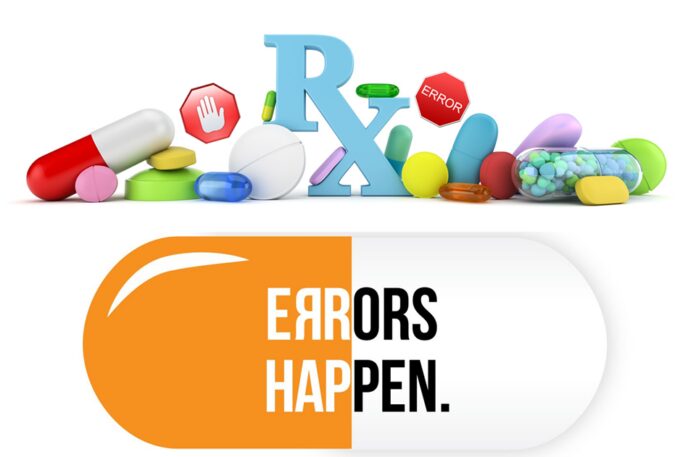Medical labeling errors put the public at risk. For this reason, it is crucial to employ all measures that can prevent errors, including engaging a healthcare translation company.
A translation company can translate the drugs’ and other medical products’ instructions and information into a target population’s language. This move makes it easy for all patients to understand the medical information on the labels.
Notably, pharmaceutical labeling errors are an old issue. The issue still exists despite the several preventive measures in the public domain.
Healthcare statistics show that annual global medication errors cost up to $27.3 billion. In the U.S, up to 7,000 people die every year because of erroneous medication dispensation. These statistics necessitate viable strategies or measures that can reduce pharmaceutical labeling errors.
Some of the labeling errors on pharmaceutical products are labeling a product as another, incorrect dosage, incorrect expiry date, and labelling the wrong side of the package.
Measures to Reduce Medical Labeling Errors

Eurolingo, a Language Service Provider (LSP), has identified ways and means of reducing medical labelling errors as follows:
Text and Artwork Inspection
Manufacturers of medical drugs and equipment should inspect all texts and artworks on the medical supplies labels to ensure they carry the correct information. If they find any error, they should correct it before releasing the medical products into the market.
The inspection should take place at every level of the labelling process. This move ensures that the labels are legible, compliant, and accurate. The braille language on the labels should also be accurate.
Proofreading

If medical labelling adjustments happen at the last minute, proofreading should take place before the approval of the adjustments. Last-minute adjustments carry a high probability of errors. So, they require proofreading to confirm their appropriateness.
Proofreading seeks to identify grammatical and barcode errors, among other errors. If proofreading will take time, such a delay is acceptable instead of a costly recalling of the products once they get on the market.
Sometimes, pharmaceutical products can carry multiple languages. In such an instance, there is a need for proofreading. So, a translation company for pharmaceutical content comes in handy to proofread any sophisticated language. Such a company also can proofread multiple page labels that small medical containers carry.
Use Two Patient Identifiers
Specimen labelling should occur before the collection of the specimen from a patient. The label should carry the appropriate positive identity of the patient. Also, the labelling of medication containers should happen in the presence of a patient.
The label of the medication or specimen should carry two patient identifiers. Some of the identifiers to use are the patient’s full legal name, pharmaceutical record number, birth date, and sample source.
Periodic Audits of the Labeling Process
Carry out a periodic audit of the labelling process. This move ensures that your staff carries out all steps of the labelling procedure. Also, the audit seeks to find out whether the labels carry the right content, including two patient identifiers and the contents of the package.
Notably, the use of handwriting on pharmaceutical supplies labels is unacceptable. A patient can easily misinterpret the handwriting and compromise their safety. Also, sometimes handwritten labels can be illegible.
Staff Training

Carrying a periodical audit can be a futile exercise in an instance where the medical staff has not undergone pharmaceutical labelling training. Auditing such staff is ideal in the assessment of the labelling skills of your staff.
It is a prerequisite for all medical staff involved in any labeling process to have the appropriate skills. Also, there is a need for retraining your staff periodically to remind them what they need to do to label pharmaceutical supplies correctly. Auditing trained staff can help assess the need for more medical supplies tagging or personalized training.
Invest in Staff Education
To begin with, employ competent staff members. Such members should have the skills to handle the pharmaceutical labeling process. You should also invest in staff education.
So, provide medical labelling handbooks or an electronic version of the handbooks to your staff members. Lastly, you can opt to print multiple label sets. The move always provides the staff members with enough labels.
Employ Adequate Staff Members
Sometimes, pharmaceutical labeling errors arise from staff work overload. It is difficult for a tired member of the tagging staff to apply accuracy and precision during a labelling process. For this reason, employ enough staff members in each shift.
Also, reduce tagging staff turnover. Recruitment of staff is a costly exercise in terms of time and other resources. So, if you lose staff, the loss will cause an overload on the remaining staff members. In return, there can be an increase in pharmaceutical tagging errors.
Use of Barcode Identity System

One of the CDC’s Laboratory Medicine Best Practices (LMBP) entails using barcoding in specimen labeling. This move helps in reducing pharmaceutical labelling errors significantly.
If staff do not scan the medical supplies with barcodes, using barcodes can be an unsuccessful exercise. All pharmaceutical staff should scan the barcodes on medical supplies and patients’ wristbands. To achieve this objective, create facility-wide management quality protocols to ensure a consistent scanning of barcodes.
Purchase High-Quality Labels
Sometimes, hospitals can have a harsh environment. Such an environment can make labels fall off pharmaceutical supplies or labels fade. If such events occur, your facility is at risk of medical labelling errors. Some of the high-quality labels are thermal-printed barcodes. They are more legible and accurate than handwritten labels.
Collaborative Leadership
Sometimes, a top-bottom leadership approach in a hospital facility can cause medical tagging errors. Such a leadership style sometimes causes insufficient management support to staff members.
The use of collaborative management or a bottom-up approach can reduce medical tagging errors significantly. It can result in motivated staff members’ commitment to compliance and application of improved procedures.
One Employee for the Entire Labeling Process
Having one staff member collect medical supplies or specimens and another conduct the labelling process can lead to labeling errors. For example, having one employee draw blood and give it out to another employee for tagging increases the chances of pharmaceutical tagging errors.
One staff member should collect and label the pharmaceutical supplies and specimens. This move facilitates the successful completion of the labeling process. In other words, pharmaceutical labeling requires the direct involvement of a single employee. However, the labeling area can have multiple employees handling the labeling process individually.
Never Pool Medical Supplies and Specimens Before Labeling
The pooling of pharmaceutical supplies and specimens and labelling them increases the risk of tagging errors. Sometimes, medical staff can get confused about the correct labels for each pooled supply.
Every pharmaceutical supply, package, or specimen should carry a label from the source. This strategy works best when the pharmaceutical supplies have varied natures. However, make a standard policy of labeling medical supplies at the source regardless of their homogeneity. This move helps to apply the same practice to pharmaceutical supplies with different natures.
Never Use Temporary Labels

Second labelling is one of the medical labeling errors causal factors. Medical staff can probably forget to fix the permanent label on the medical supply. In return, the supply with a temporary label can mix with the ones with permanent labels.
Use of Reward and Punishment System
Every hospital facility should deter medical labeling errors at all costs. One of the strategies that a hospital can use entails using a rewards and punishment system. A facility can opt to create a program that rewards the staff members in the tagging department.
Alternatively, the facility can assess the department with few or no labeling errors and reward it. The reward can either be tangible or intangible. Giving verbal congratulations to staff members with a track record of handling the labeling process well can be an appropriate reward.
However, punishing staff members with a track record or pharmaceutical tagging errors is inevitable. This move should be recourse to several attempts to advise the staff member on the correct procedure of the labeling process. The punishment can include litigation, loss of employment, and a demotion.
Nevertheless, all staff members should know that there are rewards and punishments for consistent medical labeling errors. A reward and punishment program can motivate staff members to be keen on the medical labelling process. Also, it can deter the recurrence of errors in an unforeseeable future.
Drawing Medical Supplies and Specimens Before an Order
Some staff members can get tempted to draw pharmaceutical supplies and specimens before an order. This move equates to pooling pharmaceutical supplies and specimens and labeling them afterwards.
If a staff member draws pharmaceutical supplies and specimens before time and receives different instructions than anticipated ones, pharmaceutical labeling errors can arise.
The Bottom Line
Medical labeling errors are preventable. Their causes are rarely external. So, every medical facility can control its labeling process. Failure to do so amounts to negligence.
Notably, the avoidance of labeling errors is possible. Also, the creation of the interventions is equally fundamental to their monitoring. So, medical facilities should create policies that address medical labeling errors and enforce them for an optimal reduction of the errors.









